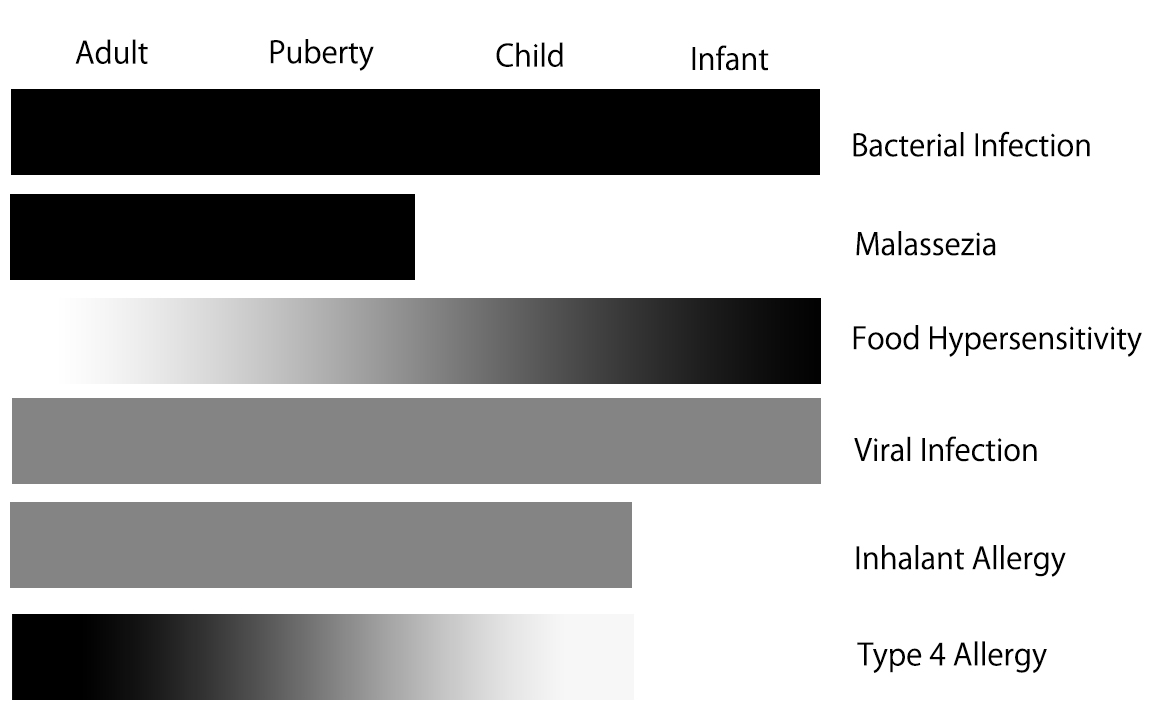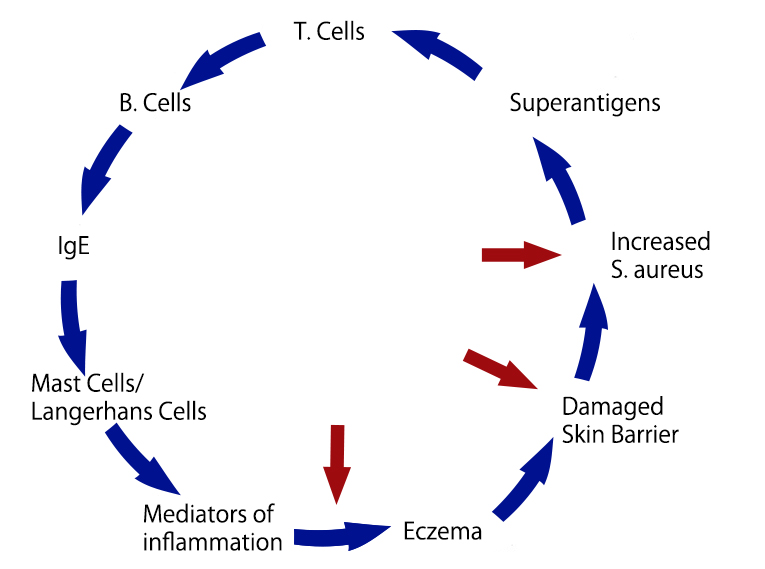Disclaimer:
This page is not intent for commercial use; all information on this individual page (frame) is direct extraction from academic works to describe the pathology of individual prognosis. The intention of this page is to raise awareness to the general public for the implicated scientific findings and academic research purpose only.
1. CAUSES
a. Cause of Acne Vulgaris
Base on the following studies, it is conclusive that gram-positive bacteria, especially cocci, are crucial in the prognostic development of Acne Vulgaris -
- According to A.D.A.M. Medical Encyclopedia - "Acne occurs when tiny holes on the surface of the skin become clogged. These holes are called pores. ... When glands produce too much oil, the pores can become blocked. Dirt, bacteria, and cells build up. The blockage is called a plug or comedone. [1]
- In a study conducted by the Kyoto University - " ...cocci were found in 10 of 19 specimens from normal facial skin...Cocci were found in 5 of 6 noninflammatory acne comedones. In inflammatory acne they were demonstrated not only in the follicular canals but also sparsely in the infiltrate surrounding the follicles." [2]
- It is safe to conclude that the trigger for Acne Vulgaris symptoms are triggered by gram-positive bacterial populating around skin pore sites.
b. Cause of Atopic Dermatitis (Eczema
There are many theories on the cause of Atopic Dermatitis or Atopic Eczema. According to a consensus report conducted by the “American Academy of Allergy, Asthma and Immunology and the European Academy of Allergology and Clinical Immunology”, the following trigger patterns for Atopic Dermatitis are as follows:
Figure 1: Relative signifcance of complicating or exacerbating factors in patients with AD from infancy to adulthood. [3]

In recent studies conducted by Prof. Dr. Donald Y. M. Leung (Division Head of Pediatric Allergy and Immunology at the National Jewish Health Hospital, America's Top Doctors 2012) has shown that the most important microbial factor involved in Atopic Dermatitis is Staphylococcus aureus or MRSA, “The Super Bug”. According to literature, “… The number of S. aureus on atopic skin depends on the type of skin lesion: S. aureus can be isolated from 55–75% of unaffected AE skin, 85–91% of chronic lichenified lesions and 80–100% of acute exudative skin lesions. The density of S. aureus can reach 107 organisms per cm2 on acute exudative AE skin lesions…”.[4] The research also indicated that the incubation Atopic Eczema is trigger in a cyclical pattern, in layman's terms, “the more you scratch, the more bacteria will grow, the itchier you will get”.
Figure 2: Vicious cycle of S. aureus in atopic eczema. The arrows indicate points where the vicious cycle can be interrupted. © 2005 Society for the Publication of Acta Dermato-Venereologica, reproduced with permission from: Leung DYM. Acta Derm Venereol 2005; Suppl. 215: S11–S15. [5]

[1] Berman, K., 2011, Acne: A.D.A.M. Medical Encyclopedia. U.S. National Library of Medicine. [Website] Available at:<http://www.ncbi.nlm.nih.gov/pubmedhealth/PMH0001876/>[Accessed 19-01-2013]
[2]Imamura, S., 1972, The Localization and Distribution of Gram-Positive Cocci in Normal Skin and Lesions of Acne Vulgaris. Journal of Investigative Dermatology. [PDF] Available at: <http://www.nature.com/jid/journal/v65/n2/abs/5617211a.html>[Accessed 19-01-2013]
[3] Akdis, C.A., Akdis, M., Beiber, T., Boguniewicz, M., Eigenmann, P., Hamid, Q., Kapp, A., Leung, D.Y.M., Lipozencic, J., Luger, T.A., Muraro, A., Novak, N., Platt-Mills, T.A.E., Rosenwasser, L., Scheynius, A., Simons, F.E.R., Spergel, J., Turjanmaa, K., Wahn, U., Weidinger, W., Werfel, T., Zuberbier, T., 2006. Diagnosis and treatment of atopic dermatitis in children and adults: European Academy of Allergology and Clinical Immunology/American Academy of Allergy, Asthma and Immunology/PRACTALL Consensus Report. American Academy of Allergy, Asthma and Immunology and the European Academy of Allergology and Clinical Immunology. [PDF] Available at: <http://onlinelibrary.wiley.com/doi/10.1111/j.1398-9995.2006.01153.x/pdf> [Accessed 24-12-2012]
[4], [5] Leung, Y.M. D., 2008. 3. The role of Staphylococcus aureus in atopic eczema. Acta Derm Venereol. [PDF] Available at: <https://www.google.com.hk/url?sa=t&rct=j&q=&esrc=s&source=web&cd=1&ved=0CDkQFjAA&url=http%3A%2F%2Fwww.medicaljournals.se%2Facta%2F content%2Fdownload.php%3Fdoi%3D10.2340%2F00015555-0388&ei=A2vaUKzoMemTiAeYvoHQAw&usg=AFQjCNECZudbTcsvUEylo3MtFJzBiNdlGg&bvm=bv.1355534169,d.aGc&cad=rja> [Accessed 26-12-2012]









Follow us